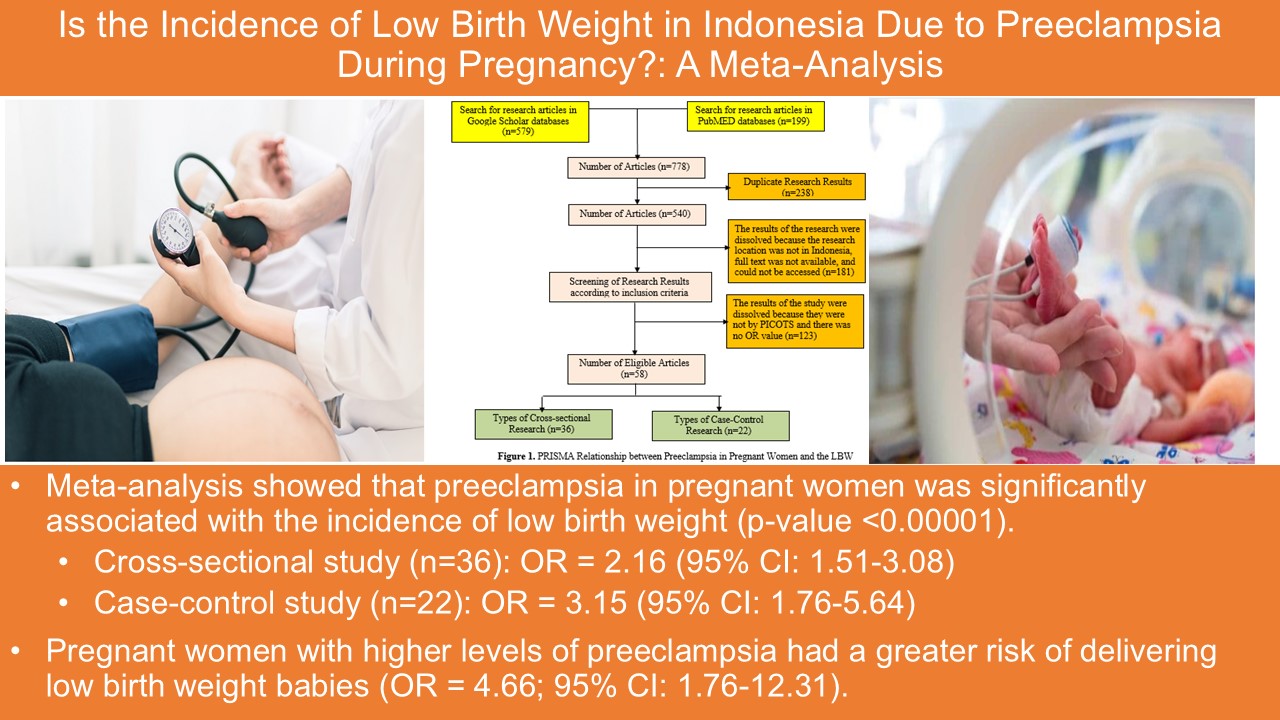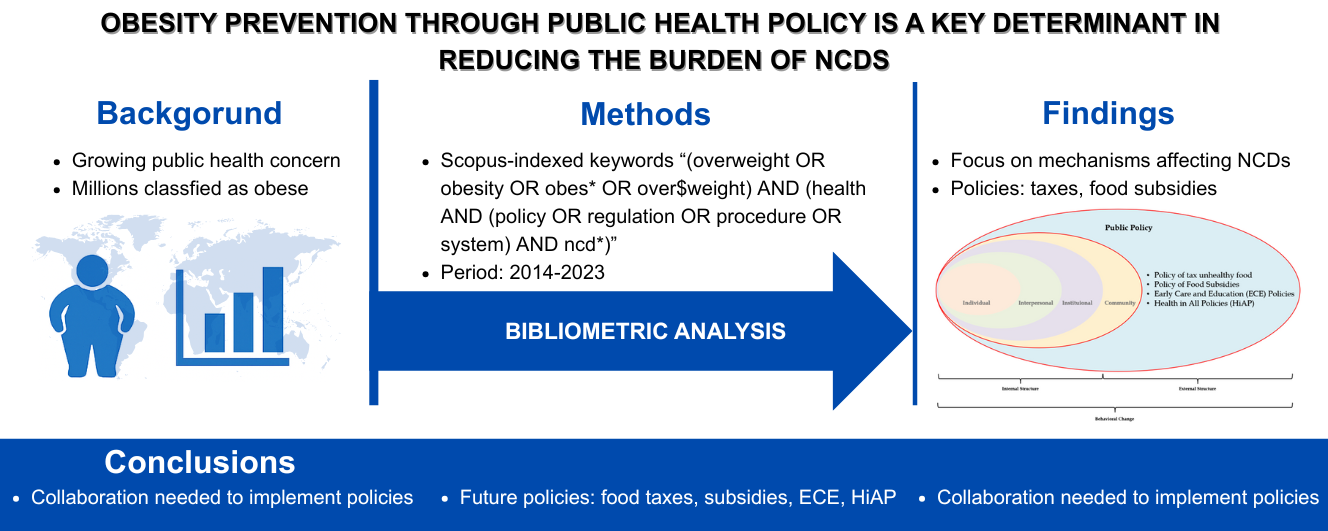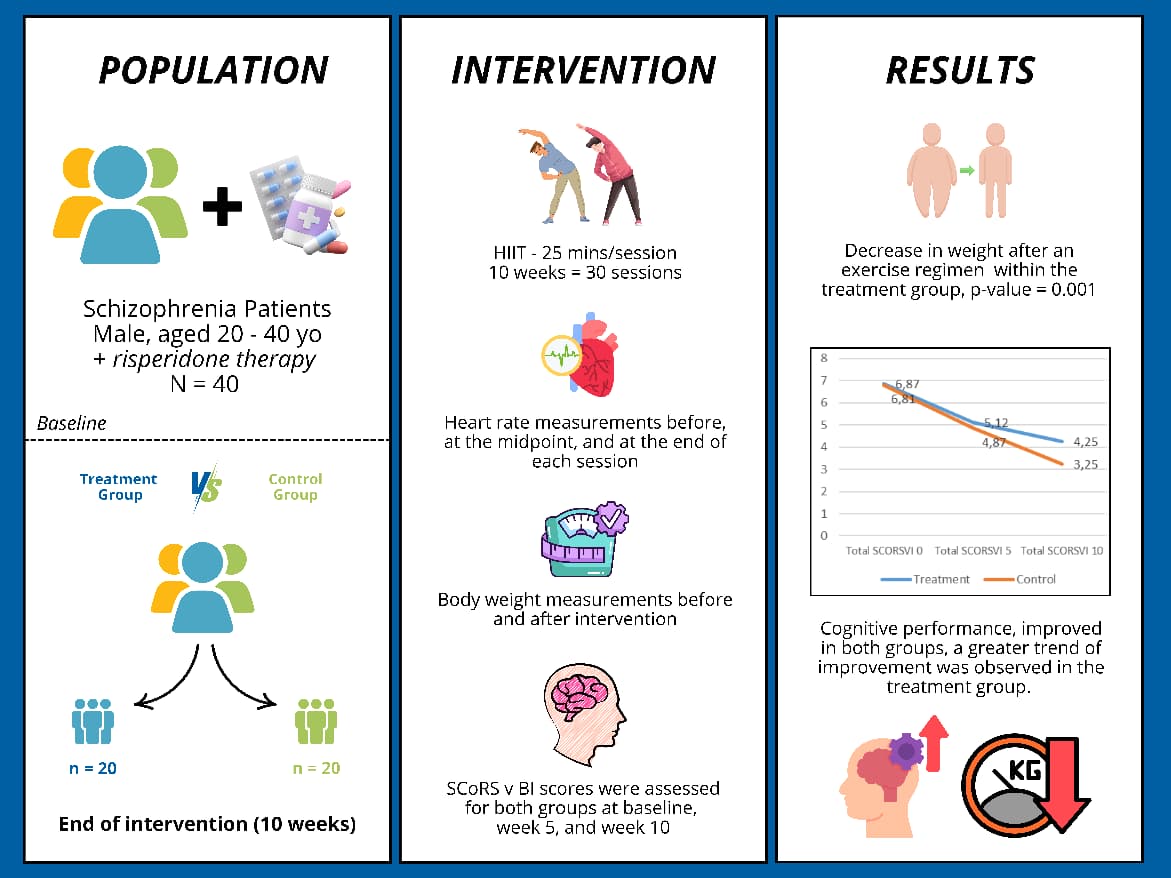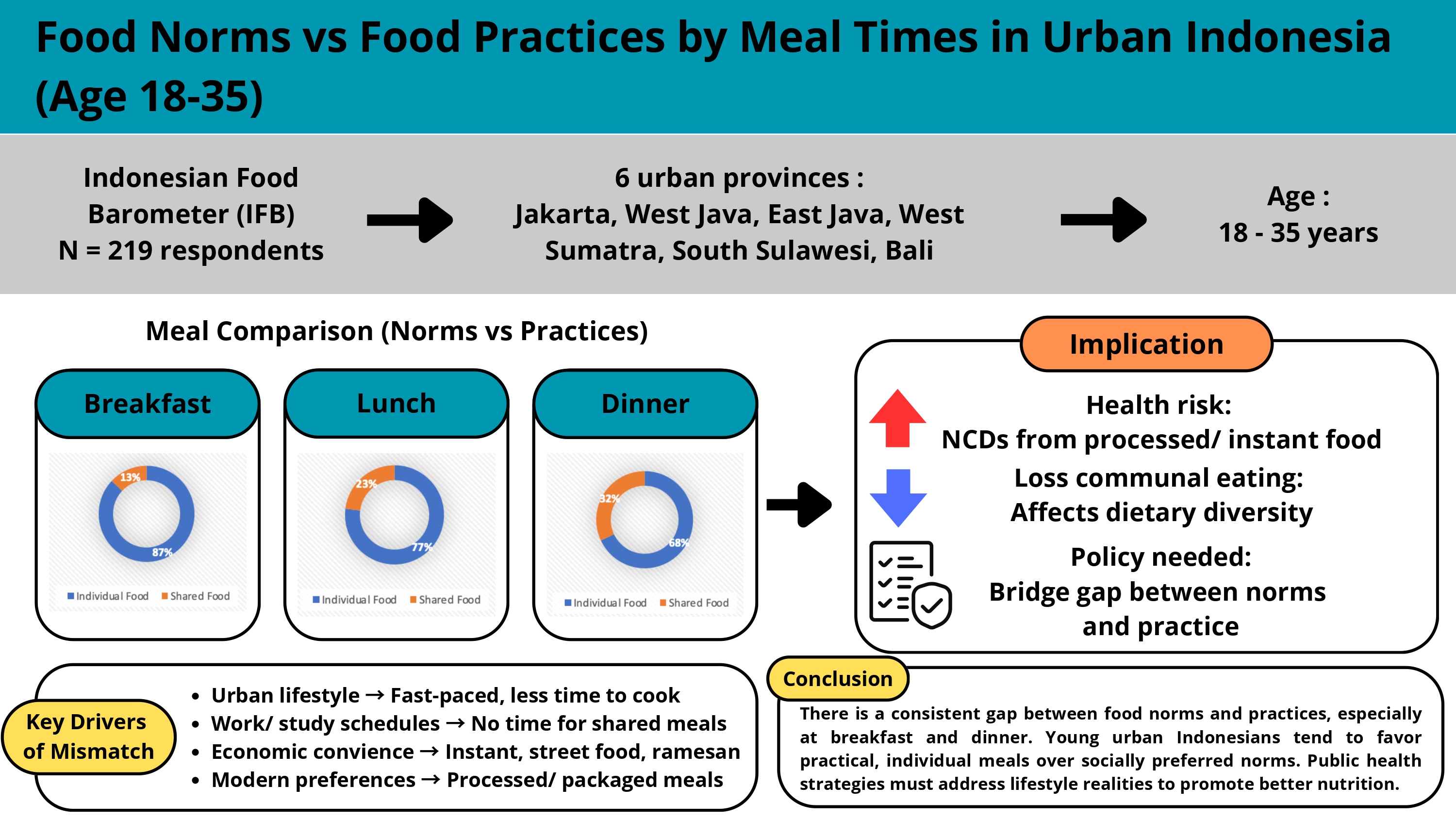Energy and Sugar Content of Ready-To-Drink Tea and Coffee Marketed in South Tangerang, Indonesia
Downloads
Excessive sugar consumption, primarily through sugar-sweetened beverages, has been linked to the occurrence of type 2 diabetes mellitus (T2DM). The Ministry of Health of Indonesia recommends that the maximum sugar consumption for the general population not exceed 50 g per day. One type of sugar-sweetened beverage that has been massively distributed in Indonesia is ready-to-drink (RTD) tea and coffee. This study examined the energy and sugar content of the RTD coffee and tea marketed in the modern retail market and their contribution to the Indonesian recommended dietary allowance. This study was conducted in June 2022. Ready-to-drink (RTD) coffee and tea were purchased from five supermarkets and three minimarkets in South Tangerang City, Banten, Indonesia. Data obtained from the product label was recorded and then analysed descriptively. 47 coffee (17 brands) and 58 tea (20 brands) products were obtained during the survey. Most coffee (55.3%) and tea (86.2%) products are distributed in plastic bottles. The median serving size of coffee (240 mL) is slightly smaller than that of tea (250 mL). On average, one serving size of coffee and tea products contributes to 35.7% and 34.8% of the recommended dietary allowance of sugar, respectively. Consumers are advised to take caution while consuming RTD coffee and tea products as they might contribute to excessive sugar consumption. The government must impose regulations to limit sugar content in food and beverage products and increase consumer education to reduce sugar consumption, especially sugar-sweetened products.
American Diabetes Association. (2010). Diagnosis and Classification of Diabetes Mellitus. Diabetes Care, 33(Supplement_1), S62–S69. https://doi.org/10.2337/dc10-S062
Atmarita, A., Jahari, A. B., Sudikno, S., & Soekatri, M. (2017). ASUPAN GULA, GARAM, DAN LEMAK DI INDONESIA: Analisis Survei Konsumsi Makanan Individu (SKMI) 2014. GIZI INDONESIA, 39(1), 1. https://doi.org/10.36457/gizindo.v39i1.201
Badan Pusat Statistik. (2022). Rata-rata Pengeluaran Perkapita Seminggu di Daerah Perkotaan Menurut Komoditi Makanan dan Golongan Pengeluaran per Kapita Seminggu, 2018-2021. https://www.bps.go.id/indicator/5/2090/1/rata-rata-konsumsi-perkapita-seminggu-di-daerah-perkotaan-dan-pedesaan-menurut-komoditi-makanan-dan-golongan-pengeluaran-per-kapita-seminggu.html
Badriyah, L., & Syafei, A. (2019). Persepsi dan Perilaku Membaca Label Pangan dan Informasi Gizi pada Siswa SMK Wijaya Kusuma. Jurnal Ilmu Kesehatan Masyarakat, 8(04), 167–174. https://doi.org/10.33221/jikm.v8i04.401
Barrea, L., Pugliese, G., Frias-Toral, E., El Ghoch, M., Castellucci, B., Chapela, S. P., Carignano, M. D. L. A., Laudisio, D., Savastano, S., Colao, A., & Muscogiuri, G. (2023). Coffee consumption, health benefits and side effects: A narrative review and update for dietitians and nutritionists. Critical Reviews in Food Science and Nutrition, 63(9), 1238–1261. https://doi.org/10.1080/10408398.2021.1963207
BPOM. (2016). Peraturan Kepala Badan Pengawas Obat dan Makanan Republik Indonesia Nomor 9 Tahun 2016 tentang Acuan Label Gizi. https://tabel-gizi.pom.go.id/regulasi/4_Peraturan_Kepala_BPOM_Nomor_9_Tahun_2016_tentang_Acuan_Label_Gizi.pdf
BPOM. (2019). Peraturan Badan Pengawas Obat dan Makanan Nomor 34 Tahun 2019 tentang Kategory Pangan. https://jdih.pom.go.id/download/product/827/34/2019
BPOM. (2021). Peraturan Badan Pengawas Obat dan Makanan Nomor 26 Tahun 2021 tentang Informasi Nilai Gizi pada Label Pangan Olahan. https://standarpangan.pom.go.id/dokumen/peraturan/202x/PERATURAN_BADAN_PENGAWAS_OBAT_DAN_MAKANAN_NOMOR_26_TAHUN_2021_TENTANG_INFORMASI_NILAI_GIZI_PADA_LABEL_PANGAN_OLAHAN.pdf
Bucher, T., Murawski, B., Duncanson, K., Labbe, D., & Van Der Horst, K. (2018). The effect of the labelled serving size on consumption: A systematic review. Appetite, 128, 50–57. https://doi.org/10.1016/j.appet.2018.05.137
CNN Indonesia. (2023). BPJS Kesehatan Gelontorkan Rp7,5 T untuk Penderita Diabetes. https://www.cnnindonesia.com/ekonomi/20230208180210-78-910621/bpjs-kesehatan-gelontorkan-rp75-t-untuk-penderita-diabetes
Faselis, C., Katsimardou, A., Imprialos, K., Deligkaris, P., Kallistratos, M., & Dimitriadis, K. (2020). Microvascular Complications of Type 2 Diabetes Mellitus. Current Vascular Pharmacology, 18(2), 117–124. https://doi.org/10.2174/1570161117666190502103733
Huda, Q. A., & Andrias, D. R. (2018). SIKAP DAN PERILAKU MEMBACA INFORMASI GIZI PADA LABEL PANGAN SERTA PEMILIHAN PANGAN KEMASAN. Media Gizi Indonesia, 11(2), 175. https://doi.org/10.20473/mgi.v11i2.175-181
International Diabetes Federation. (2021). IDF Diabetes Atlas 2021, 10th Edition. https://diabetesatlas.org/idfawp/resource-files/2021/07/IDF_Atlas_10th_Edition_2021.pdf
KEMENKES. (2007). Laporan Nasional Riset Kesehatan Dasar 2007.
KEMENKES. (2014). Peraturan Menteri Kesehatan Republik Indonesia Nomor 41 Tahun 2014 tentang Pedoman Gizi Seimbang. http://hukor.kemkes.go.id/uploads/produk_hukum/PMK%20No.%2041%20ttg%20Pedoman%20Gizi%20Seimbang.pdf
KEMENKES. (2018). Laporan Nasional Riset Kesehatan Dasar 2018.
Kim, Y., Welt, B. A., & Talcott, S. T. (2011). The Impact of Packaging Materials on the Antioxidant Phytochemical Stability of Aqueous Infusions of Green Tea ( Camellia sinensis ) and Yaupon Holly ( Ilex vomitoria ) during Cold Storage. Journal of Agricultural and Food Chemistry, 59(9), 4676–4683. https://doi.org/10.1021/jf104799y
Kusnali, A., Puspasari, H. W., & Rustika. (2019). Kemitraan Pemerintah-Swasta dalam Industri Pangan untuk Menurunkan Kandungan Gula, Garam dan Lemak dalam Pangan Olahan. Jurnal Kedokteran Dan Kesehatan, 15(2), 102–117.
Lean, M. E. J., & Te Morenga, L. (2016). Sugar and Type 2 diabetes. British Medical Bulletin, 120(1), 43–53. https://doi.org/10.1093/bmb/ldw037
Malik, V. S., & Hu, F. B. (2022). The role of sugar-sweetened beverages in the global epidemics of obesity and chronic diseases. Nature Reviews Endocrinology, 18(4), 205–218. https://doi.org/10.1038/s41574-021-00627-6
Melinda, A., & Farida, E. (2021). Faktor-faktor yang Mempengaruhi Perilaku Mahasiswa FIK UNNES Dalam Membaca Label Informasi Nilai Gizi. Indonesian Journal of Public Health and Nutrition, 1(3), 491–498.
Meng, Y., Li, S., Khan, J., Dai, Z., Li, C., Hu, X., Shen, Q., & Xue, Y. (2021). Sugar- and Artificially Sweetened Beverages Consumption Linked to Type 2 Diabetes, Cardiovascular Diseases, and All-Cause Mortality: A Systematic Review and Dose-Response Meta-Analysis of Prospective Cohort Studies. Nutrients, 13(8), 2636. https://doi.org/10.3390/nu13082636
Pinho-Gomes, A.-C., Dunford, E., & Jones, A. (2023). Trends in sugar content of non-alcoholic beverages in Australia between 2015 and 2019 during the operation of a voluntary industry pledge to reduce sugar content. Public Health Nutrition, 26(1), 287–296. https://doi.org/10.1017/S1368980022002300
Rizona, F., Appulembang, Y. A., & Rahmawatif, F. (2022). IMPROVING FAMILY SUPPORT ON PREVENTING OBESITY CHILDREN THROUGH FOCUS GROUP DISCUSSION. Proceeding B-ICON, 1(1), 201–204. https://doi.org/10.33088/bicon.v1i1.35
Sartika, R. A. D., Atmarita, A., Duki, M. I. Z., Bardosono, S., Wibowo, L., & Lukito, W. (2022). Consumption of Sugar-Sweetened Beverages and Its Potential Health Implications in Indonesia. Kesmas: Jurnal Kesehatan Masyarakat Nasional, 17(1). https://doi.org/10.21109/kesmas.v17i1.5532
Sinaga, C., & Simanungkalit, S. F. (2019). Faktor-Faktor yang Berhubungan dengan Perilaku Membaca Label Informasi Gizi. Jurnal Endurance, 4(1), 192. https://doi.org/10.22216/jen.v4i1.3890
Statista Market Insight. (2023). Non-alcoholic drinks report Indonesia. https://www.statista.com/outlook/cmo/non-alcoholic-drinks/indonesia
Tang, G.-Y., Meng, X., Gan, R.-Y., Zhao, C.-N., Liu, Q., Feng, Y.-B., Li, S., Wei, X.-L., Atanasov, A. G., Corke, H., & Li, H.-B. (2019). Health Functions and Related Molecular Mechanisms of Tea Components: An Update Review. International Journal of Molecular Sciences, 20(24), 6196. https://doi.org/10.3390/ijms20246196
Umoafia, N., Joseph, A., Edet, U., Nwaokorie, F., Henshaw, O., Edet, B., Asanga, E., Mbim, E., Chikwado, C., & Obeten, H. (2023). Deterioration of the quality of packaged potable water (bottled water) exposed to sunlight for a prolonged period: An implication for public health. Food and Chemical Toxicology, 175, 113728. https://doi.org/10.1016/j.fct.2023.113728
Viigimaa, M., Sachinidis, A., Toumpourleka, M., Koutsampasopoulos, K., Alliksoo, S., & Titma, T. (2020). Macrovascular Complications of Type 2 Diabetes Mellitus. Current Vascular Pharmacology, 18(2), 110–116. https://doi.org/10.2174/1570161117666190405165151
WHO. (2023). Diabetes. https://www.who.int/news-room/fact-sheets/detail/diabetes
Yayasan Lembaga Konsumen Indonesia. (2019). Survei YLKI: Efektivitas Penandaan Kandungan Pemanis Buatan pada Label Pangan. https://ylki.or.id/2019/10/survei-ylki-efektivitas-penandaan-kandungan-pemanis-buatan-pada-label-pangan/
Yen, C., Huang, Y.-L., Chung, M., & Chen, Y.-C. (2022). Sugar Content and Warning Criteria Evaluation for Popular Sugar-Sweetened Beverages in Taipei, Taiwan. Nutrients, 14(16), 3339. https://doi.org/10.3390/nu14163339
Yoshida, Y., & Simoes, E. J. (2018). Sugar-Sweetened Beverage, Obesity, and Type 2 Diabetes in Children and Adolescents: Policies, Taxation, and Programs. Current Diabetes Reports, 18(6), 31. https://doi.org/10.1007/s11892-018-1004-6
ZupaniÄ, N., Hribar, M., Fidler Mis, N., & Pravst, I. (2019). Free Sugar Content in Pre-Packaged Products: Does Voluntary Product Reformulation Work in Practice? Nutrients, 11(11), 2577. https://doi.org/10.3390/nu11112577

This work is licensed under a Creative Commons Attribution-NonCommercial-ShareAlike 4.0 International License.
- MEDIA GIZI INDONESIA Journal is the copyright owner of all materials published on this website.
- The formal legal provisions for access to digital articles of this electronic journal are subject to the terms of the Creative Commons Attribution-NonCommercial-ShareAlike license (CC BY-NC-SA 4.0), which means that MEDIA GIZI INDONESIA Journal and readers reserve the right to save, transmit media / format, manage in database, maintain, and publish articles as long as it continues to include the name of the Author.
- Printed and published print and electronic manuscripts are open access for educational, research and library purposes. In addition to these objectives, the editorial board shall not be liable for violations of copyright law.


2.png)





















